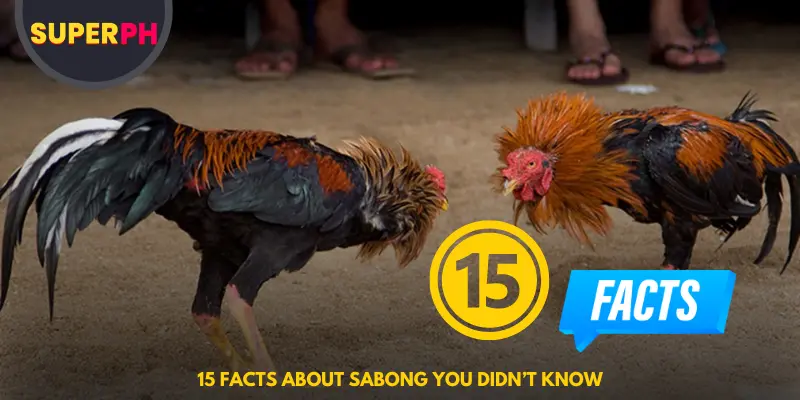More popularly known to Filipinos as sabong, Despite its lengthy history, not a lot of people know many things facts about Sabong. Well, though it has been at the center of sports for so many years, there are still numerous lesser known facets of this sport. Whether you are a newcomer or an already seasoned enthusiast of cockfighting, read on to find these 15 facts about sabong you didn’t know.
15 Facts About Sabong You Didn’t Know
1. Sabong Originated During Ancient Times
Sabong is one of the oldest known sports in human history. Records show that it was already practiced in ancient India, China, and Persia. It finally spread across the world and has kept its popularity across cultures, very much active in Southeast Asia and Latin America.
2. Sabong in the Philippines is part of the Culture

Sabong is part of the Filipino culture, and for many Filipinos, it serves as much more than a sport but rather a way of life. Raising gamefowl and participating in cockfighting tournaments are some of the big parts of local traditions and celebrations. On the national scale, local cockpit arenas abound where local enthusiasts tend to gather to witness and bet on each match.
3. Not all the sabong matches end in death.
One of the facts about Sabong is that contrary to popular belief, not every sabong match ends with the death of any of the roosters. While injuries are common, some matches are stopped when one rooster has been deemed unable to continue. In these events, roosters that survive often retire or are rehabilitated, but their aggressive nature often keeps them from reintegrating with other chickens.
4. Fighting Roosters have a Special Diet and Training
Fighting roosters are treated to a special diet that should make them perform optimally. Breeders also put them through hard training via sparring sessions, among other ways, to get them ring-ready. The roosters have training regimes almost similar to athletes-targeting strength, agility, and endurance.
5. International Tournaments like the World Slasher Cup
The Philippines also holds various international sabong tournaments. One is the World Slasher Cup, an “Olympics of Cockfighting.” This prestigious event invites breeders from every part of the world to bring their best gamefowl to the competition.
=> View more SuperPH partner: Goal11, Slotvip.
6. Sabong Has a Specialized Betting System
Betting is an essential part of sabong and has its own unique system. In the Philippines, betting is often mediated by “kristos,” who use hand signals to communicate with bettors due to the loud environment in cockpits. This hand sign language is crucial for managing the fast-paced nature of the betting process.
7. Different Breeds are Used for Cockfighting
There are several breeds of fighting roosters, each known for their unique fighting style and characteristics. Popular breeds include the Kelso, Hatch, Asil, and Peruvian gamefowls. These birds are selectively bred for their aggression, agility, and resilience in combat.
8. Sabong was first witnessed by Magellan’s crew back in 1521.
Indeed, when Ferdinand Magellan’s men arrived in the Philippines in 1521, they were among the first Europeans to witness modern sabong. This was documented in the chronicles of Antonio Pigafetta, chronicler for the expedition led by Magellan for Western audiences.
9. The Philippine Government Has Regulated Sabong
While sabong is legal within the Philippines, it is nevertheless subject to government regulation. Licenses need to be issued to local cockpit arenas, and certain rules need to be put in place to make sure sabong retains its controlled activity status. However, e-sabong, or online cockfighting, was declared illegal due to concerns about its social and legal implications.
10. Cockfights Take Place in a Cockfighting Ring or Pit

A cockfighting arena is an enclosed area specifically designed for cockfighting. Cockpit arenas are usually circular, with high walls to keep both birds and spectators inside the area. In the middle of the cockfighting arena is a cockpit where the cocks battle one another. Cockfighting arenas feature viewing seats and stands for spectators to watch matches comfortably.
11. In Sabong, Roosters Are Equipped With Gaffs or Spurs
Sabong has natural spurs that are part of the leg bone. Covered with keratin, the natural spurs are a rooster’s weapons to maintain its position at the top of the pecking order, defend its territory, and drive away predators. In cockfighting, these spurs are often removed and replaced with gaffs or metal spurs.
Gaffs are knives that resemble ice picks, sharp enough to inflict serious injury on another bird. The length of a gaff can vary, and it can either be a single edge blade or a double-edged one.
12. Breeding Fighting Cocks Is a Lucrative Industry
Since cockfighting is popular in a lot of countries, breeding gamefowl has become a booming business as well. Some handlers and breeders even travel the world to sell their fowls in international cockfighting expos and tournaments. There are also those who ship birds worldwide.
13. The Most Expensive Fighting Rooster Is the Ayam Cemani
The most expensive game fowl in the world is the Ayam Cemani, which hails from Indonesia. It is characterized by its pure black form, from its feathers all the way to the beak, skin, bones, organs, and meat. An Ayam Cemani bird is very difficult to acquire as there are only 3,500 of them in existence. Its price can go as high as 5,000 USD.
14. Cockfighting Is a Way of Life for Many Individuals
For a lot of people, cockfighting isn’t just a game or pastime. It is also a way of life. Some people participate in cockfighting as it allows them to earn extra money, especially if they only earn minimum wage from their day jobs. Some have even made cockfighting their sole job or a business that allows them to feed their families and send their kids to school. Others see cockfighting as a way to relax and a means to escape from life’s problems.
15. Sabong Remains a Controversial Topic
The last of the facts about Sabong is that while sabong is steeped in cultural tradition, it has nevertheless been the subject of much controversy due to fear of animal cruelty. Indeed, many advocacy groups on animal rights claim that this is just a violent and exploitative sport for animals. However, for supporters, sabong represents a tradition to be protected by reason of its historical and cultural value.
=> View more: Is Sabong allowed in the Philippines?
Conclusion Facts about Sabong
With SuperPh, Sabong is a very historical and cultural sport, especially in the Philippines, where the sport remains popular today. It has been deemed controversial and has been ruled illegal in many parts of the world. Nonetheless, the sport continues to attain acceptance in areas where it is regarded as part of the culture. Whether one views it as a tradition or a spectacle, sabong offers an interesting insight into the world of animal combat sports.


